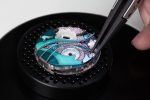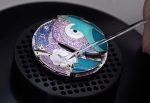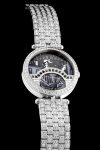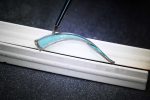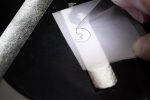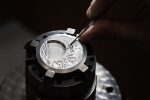Reviews
The Butterfly Effect
Reviews
The Butterfly Effect
So, in some ways, I’ve always found it funny that the majority of watch brands have been creating traditional complications intended to add some other level of empirical information to the watch. For example, a perpetual calendar that will allow you to navigate the shoals of the Gregorian calendar, a minute repeater that will transform empirical time into sound, a chronograph… well, that will give you a precise empirical measure over time during a specific event. It’s interesting that the world’s most expensive Rolex, which sold for nearly 2.5 million Swiss francs at the Phillips Geneva Watch Auction in May 2016, was one of 12 known split-second chronographs of its type created by the brand in 1942, and offered — according to the neatly packaged mythology accompanying it — only to a select group of racecar drivers from professional racing teams. And yes, the amazing movement within it allows you to calculate a lap time thanks to an additional split-second hand, but I can pretty much assure you that it was never actually used by any professional driver ever, while he was racing. Have you ever tried to read a split time off a rattrapante? Imagine doing that at speed, inside a car cockpit.
That is precisely the purpose underlying what is one of the most charming watches I’ve encountered this year and it is, of course, made by Van Cleef & Arpels. Since the 2000s, Van Cleef & Arpels has been making complicated watches in a decidedly different way. Their Poetic Complication, as the name implies, is intended to evoke emotion and delight from the wearer in visually and intellectually provocative ways that transform the watch from an empirical instrument into a platform for the most delightful artistic expressionism.
The latest watch from Van Cleef & Arpels, however, is something quite different. It is a round, medium-sized watch with dial rendered in a dazzling array of marquetry and enamel work — a pastoral scene depicting long tapering leaves that traverse the dial is created using the plique-à-jour technique, producing a lovely translucent enamel that looks like stained glass. But it is on the bottom left side of the dial that an incredible miniature butterfly rendered in white gold with plique-à-jour wings lives. And I mean “lives” in a very literal sense of the word. Because if the Greeks were the ones to first express the concept of anima, or the idea of an object being animated with a spirit of soul, the butterfly in the Lady Arpels Papillon Automate is the highest, most evocative manifestation of anima in high luxury today.
To begin with, this butterfly flutters its wings one to four times in a row depending on the level of the power reserve, so it tells you how much energy the watch has. But there is also a mechanism that compels the butterfly to flutter its wings at random intervals. This takes place 19 times per hour when the watch is not being worn. Not only that, incredibly, the butterfly can also sense your level of energy based on how rapidly the automatic-winding mechanism in the watch’s movement is triggered, and the rate of fluttering speeds up when the watch is worn on the wrist — for example, the butterfly can flutter its wings at 100 beats within half an hour if you wear the watch when you’re actively moving your arm. Says Bos, “We like the idea that when you go to sleep and place your watch by your bedside table, your butterfly will also go to sleep and flap its wings infrequently. But if you are busy and active, then the butterfly will flap its wings more frequently, because like a pet or a companion, it exists to mirror your energy and your life patterns.”
I would be loath to position the Lady Arpels Papillon Automate as a women’s watch because it is so universally appealing. It is a watch that lives for the sole purpose of bringing delight to its owners and as such, is very much like a pet or a companion, living a life that is simultaneously independent yet inextricably linked with yours. More than just a timepiece, the Lady Arpels Papillon Automate is one of the most significant works of contemporary watchmaking expressionism. It is a perfect expression of happiness, delight, surprise and charm. And I can’t think of anyone, male or female, that couldn’t have a bit more of all of these qualities in their lives. By enriching and evolving their philosophy for Poetic Complications, Van Cleef & Arpels has also permanently enriched and evolved the story of watchmaking.





